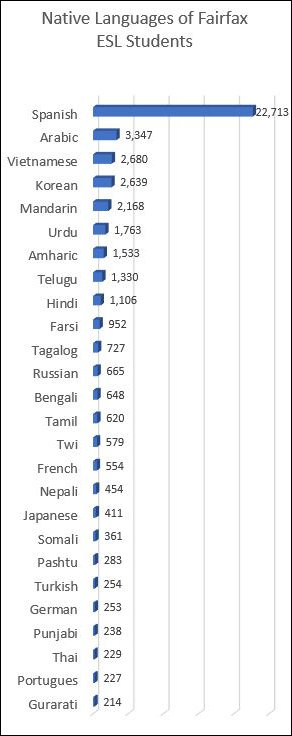
by James A. Bacon
A couple of weeks ago I speculated on the reasons for the continued fall in Standards of Learning (SOL) English test scores, a trend that was particularly conspicuous for African-Americans and Hispanics. The prime culprit, I suggested, was the imposition of “restorative justice” disciplinary policies, designed to reduce the disparity in suspensions between black and white students, which had the effect of undermining order in in classrooms and disrupting teaching.
Now comes another explanation — at least a partial one — by way of Debbie Truong with the Washington Post, who focuses on the precipitous decline among English as a Second Language (ESL) students. It turns out that the Virginia Department of Education (VDOE) changed the way it calculated pass rates for ESL learners in response to a change in federal education law.
During the 2016-17 school year, 64% of English learners who took state reading exams in Virginia passed, writes Truong, citing VDOE data. Two years later, the pass rate dropped to 35%. The reason, she explains:
Previously, Virginia education officials included the scores of those former English-language learners in their calculation of overall passing rates, for up to two years after the student was no longer classified as an English-language learner. That had the effect of inflating the passing rate for that group of students overall.
That changed with the most recent round of exams. This time, the state did not include the scores of former English-language learners, which meant the results released in August reflected only the passing rates of students currently classified as English learners.
The state also recalculated passing rates for the 2017-2018 school year to remove the scores of students who had gained English proficiency, said Charles Pyle, spokesman for the Virginia Department of Education. …
In the future, Pyle said, the state plans on publishing data that show passing rates with and without the scores of former English-language learners.
ESL students are a linguistically diverse group, speaking dozens of different languages, but the dominant tongue is Spanish. Slightly more than half the students in the Fairfax County school system, the state’s largest, speak English as a second language. Almost half (48.4%) of those speak Spanish as a native language. (The overwhelming majority of these are from Latin America, not Spain.) The other ESL students come from a wide variety of Asian countries, with a smattering from Africa and a handful from Russia and other European countries. Northern Virginia is a bigger magnet for immigrants around the world than the rest of Virginia, so those numbers are not necessarily typical of the entire state. But they show that one cannot assume that most ESL students are Hispanic.
VDOE adjustments to its SOL reporting methodology probably do help explain why Hispanic pass rates for English and Writing declined more than for any other racial/ethnic group between the 2016-17 school year and the 2018-19 school year. But the change does not explain why SOL pass rates on English and Writing exams for white students dipped, why SOL pass rates for blacks declined even more, nor why Asians, despite constituting nearly half the ESL demographic in Fairfax County, declined at a lower rate, commensurate with white students.
Clearly, tweaks to ESL reporting was a factor in declining English test scores. But they don’t come close to telling the whole story.

Leave a Reply
You must be logged in to post a comment.